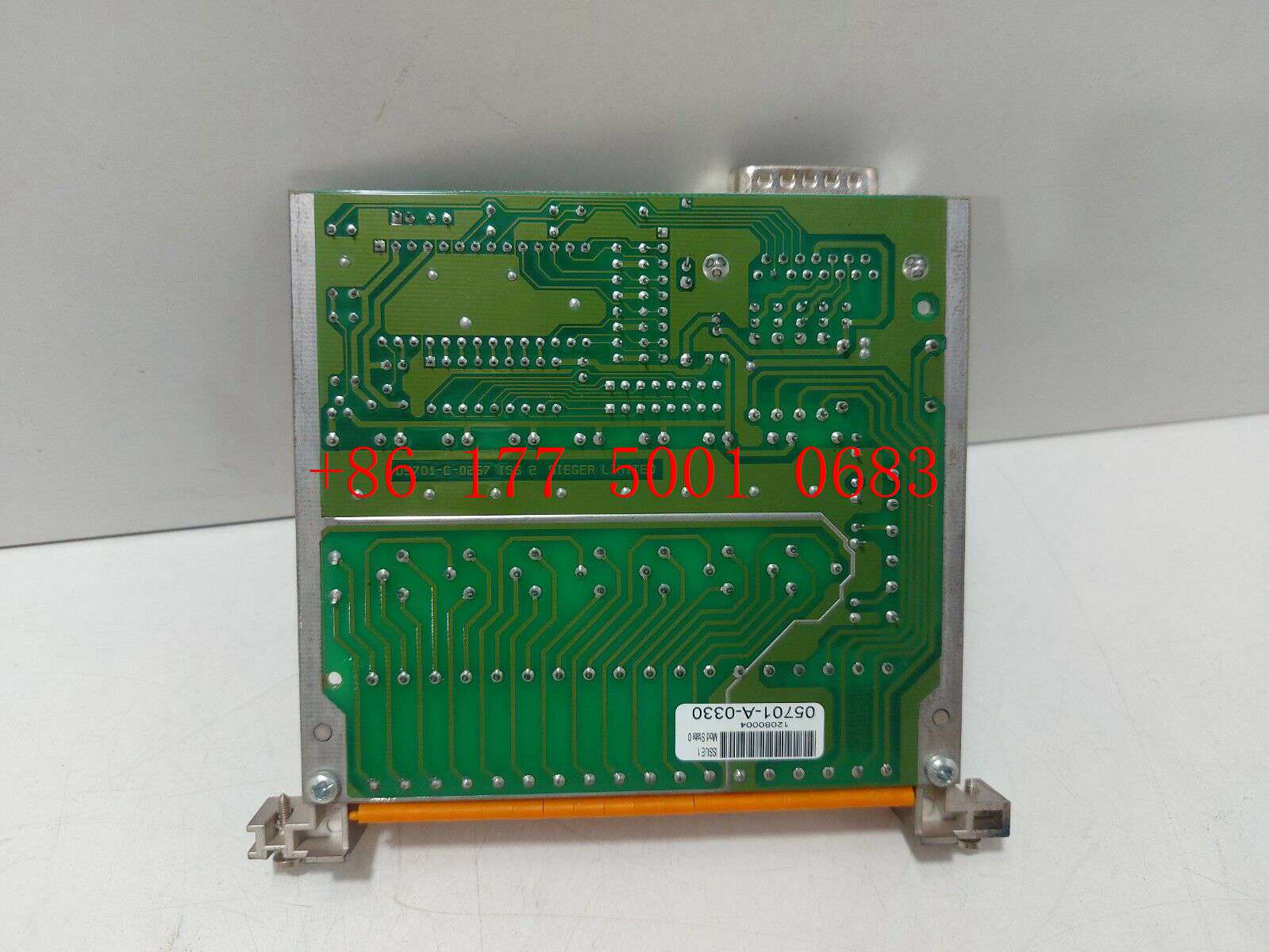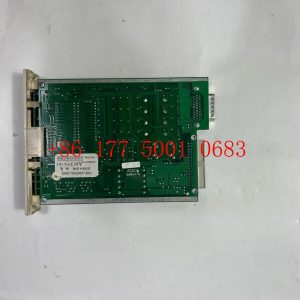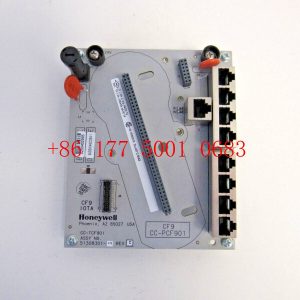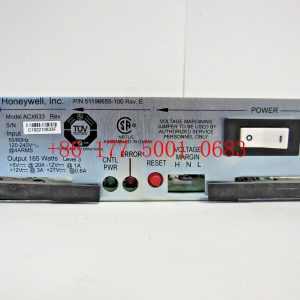Description
hardware flow control. It is an ideal choice in the field of industrial automation.
Design of ABB industrial robot deburring and grinding workstation based on RobotStudio simulation software
introduction
As an official offline programming software for ABB robots, Robotstudio not only has powerful simulation and offline programming functions, but also has automatic path generation
function and simulation monitoring collision function. It can realize the simulation of robots in real scenes, so as to timely update existing robot programs. optimize. On-site teaching
programming will affect normal production activities on site.
The application of Robotstudio software offline programming can reduce on-site teaching and programming time.
As a traditional process of mechanical processing, deburring and grinding have a wide range of applications. However, for a long time, in the process of manual deburring
and polishing, there have been differences in operations between workers. The manual operation is not repeatable and the deburring effect is unstable, which has seriously
affected the surface quality and service life of the finished product; and the working environment There is a large amount of dust floating in the air and the conditions are harsh,
seriously endangering the physical and mental health of workers. With the proposal of “Made in China 2025”, intelligent manufacturing production has become an
important development direction for the transformation and upgrading of the future manufacturing industry. The use of industrial robot automated production lines for repetitive
batch processing operations can not only greatly improve production efficiency, but also greatly improve product quality. Yield and production stability. Therefore, before designing
the robot polishing program, if the shape, size and polishing amount of the workpiece to be polished are known, the robot offline program can be written on the
Robotstudio software according to the existing conditions, thereby improving the efficiency of on-site programming.
1Design task description
This task is to create a new simulation workstation in ABB robot simulation software Robotstudio. The corresponding training equipment in reality is the Yalong
YL-l360A industrial robot deburring and grinding system control and application equipment. The industrial robot selection and method of the simulation workstation are
The grinding head installed on the blue plate refers to the Yalong YL-l360A industrial robot deburring and grinding system control and application equipment, and the
workpiece is customized. The ABB industrial robot deburring and
grinding workstation simulation training process includes: creating a workstation, setting up tools, creating smart components, creating tool coordinate systems,
creating trajectories, programming, simulation design, and verification.
2 Task implementation
2.1 Create a workstation
Import the robot: First, create a new simulation workstation in the Robotstudio software. The workstation name is self-named, and then import the
corresponding industrial robot IRB1410. The robot position remains unchanged by default. Create a robot system, modify the system options, check 709-1D
eviceNetMaster/s1ave, select Chinese as the language, and leave the other options unchanged by default, then click Confirm to create the robot system
After the robot system is created, hide the industrial robot IRB1410 to facilitate subsequent workstation operations.
Import workpiece: The workpiece here is customized, and the corresponding workpiece is selected according to the actual situation on site. This article
uses the original workpiece Curvet in Robotstudio software. After importing it into the workstation, according to the reachable range of the robot, just place the
workpiece at a suitable location within the reachable range of the robot, as shown in Figure 1.
Import the grinding rotor tool: First, create a new grinding rotor tool component – rotor – copy (2) and rotor – copy (2) in the so1idworks 3D software. The
rotor – copy (2) is a rotatable grinding rotor. —The copy is the tool body, which is the grinding rotor frame, and is installed on the robot flange, as shown in Figure 2.
2.2 Setting tools
First, move the rotatable grinding rotor and the tool body to the local origin based on point A, and adjust the initial tool angle so that the grinding rotor is
parallel to the x-axis of the geodetic coordinate system, as shown in Figure 3. Set the local origin of the tool body at this time, change the position x, y,: to 0, 0, 0, and change the direction x, y,: to 0, 0, 0.
Figure 3 Tool settings
Create a new frame at point B of the tool body, name it “frame l”, and adjust the direction of frame l so that the axis is perpendicular to the
plane of point B. The specific direction is shown in Figure 4.
https://www.xmamazon.com
https://www.xmamazon.com
https://www.plcdcs.com/
www.module-plc.com/
https://www.ymgk.com
CDD32.003.C2.1 LUST servo drive
PCIE-6363 Multifunctional I/ O device
ACSM1-04AM-016A-4 Mechanical drive module
1756-CNBR/E Communication interface module
3HAC025338-004/06D main servo drive unit
1747-L552/C SLC 500 processor
3HAC7998-2 Cable
IS200ERRRH1A Redundant relay for exciter regulator
2711P-T10C15D1 Operator terminal
2711P-T10C15D1 Operator terminal
2711P-T10C15A1 Operator terminal
2711P-T7C15D1 Touch screen
UFC719AE101 3BHB003041R0101 Controller module
UGTMEM-03LBB11 22.5V servo motor
20BD8P0A3AYNAND0 Digital PWM AC driver
6FC5203-0AF02-0AA1 Siemens Operating panel
HE693SNP306AX Cable connector
QTERM-K65 Beijer panel installation man-machine interface
2711PC-T6C20D8 PanelView Plus 6 Compact 600 Graphics terminal
CIMREX60 BEIJER Operator Panel
NTCF23 Optical fiber communication terminal
F3322 Digital output module
F7133 4-channel power distribution module
6181P-15TP2KH integrated display computer
IS220PSVOH1A servo control package
8440-1715 SPM-D11 synchronizer WOODWARD
FC-TSAI-1620M Security manager system module
TSXP57204M SCHNEIDER Processeur TSX 57
IMDSO04 Digital slave output module
P0926JM FOXBORO Secondary power input
330851-02-000-060-10-00-00 Expansion sensor
330850-50-00 BENTLY NEVADA preprocessor
330854-040-24-00 Differential extension cable
1746-NIO4V Analog Input
1785-V40L Programmable controller
TRICONEX 3720 Communication Module 3721 3721C
PFTL101B 2.0KN 3BSE004185R1 Tension sensor
DS200SIOBH1ACA circuit board module
UTV-F2500HA Manipulator controller
6DD1661-0AB1 Communication component
MVME5500-0161 MPC7455 processor
DS200TBQCG1AAA RST Analog terminal board
T8451C T8451 Trusted TMR 24 Vdc Digital Output module
DS200TCCAG1BAA I/O TC2000 analog board
1788-DNBO DeviceNet daughter card
1794-ACNR15 Redundant control network adapter module
1794-OE4 Flex IO high density analog output module
20-VB00601 Drive board
2711-K10G9L1 Keyboard/Touch Operator interface Terminal
2711-NM15 B Series Memory card
2711-T10C10 Standard operator terminal
2711-NM28 8MB Flash ATA card
TSXDSY64T2K Discrete output module
2711-T10G8L1 1000 control terminal
2711-T5A8L1 Man-machine interface (HMI) equipment
3BHB045647R0001 UNL14300 module
3BHB045647R0003 Module
3BHB045668R0008 Module
DDC779BE02 3BHE006805R0002 Motherboard module








Reviews
There are no reviews yet.